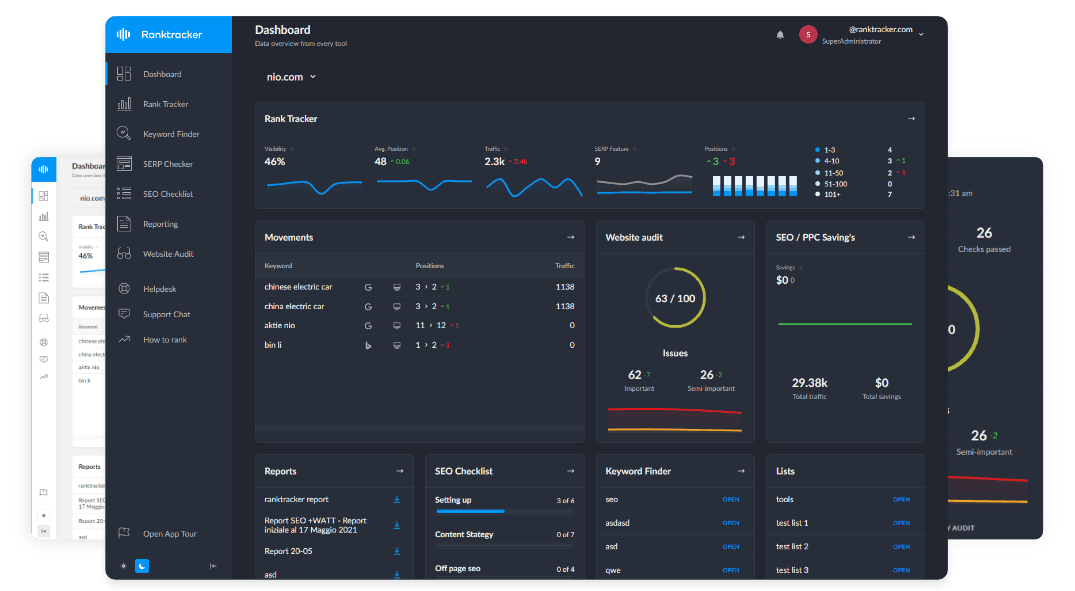Intro
Two summers ago a mid-size retailer vanished from page one overnight. There was no sudden influx of toxic backlinks or wave of thin content. Instead, a single QR code slipped into a conference flyer led scanners to a spoofed login page, siphoned credentials, and gave attackers the keys to the domain. Search engines detected the malicious redirects long before the marketing team, slapped the site with Safe Browsing warnings, and traffic cratered.
Incidents like this show why QR code phishing—better known as quishing—belongs on every SEO checklist. The threat blends social engineering with invisible redirects, turning innocent-looking squares into gateways for spam pages, credential theft, and black-hat link schemes. When crawlers see the fallout, rankings collapse faster than you can say “index request.” The following guide unpacks how quishing works, which ranking signals fail first, and the layered defenses that keep visibility intact.
Understanding the Anatomy of a Quishing Attack
A quishing campaign hides behind the cultural trust users place in QR codes. At a trade-show booth, an email signature, or the sidebar of a blog, the code promises friction-free access to a white paper or coupon. A quick scan, however, sends the victim to a pixel-perfect clone of a familiar login portal. No URL hover, no context clues—just instant compromise. Reports of cybernews hackers stealing logins via QR codes show just how effectively a single scan can hand over credentials.
A recent Fast Company report on quishing tactics outlines the mechanics behind that first moment of trust, tracing how criminals weaponize convenience to create a beachhead inside brand infrastructure.
The life cycle usually follows four predictable moves:
- Seed stage – A legitimate image, PDF, or press release is modified to include the malicious code.
- Distribution stage – The asset circulates through newsletters, social posts, or third-party sites.
- Harvest stage – Victims submit credentials on a spoofed portal, granting attackers live access.
- Exploitation stage – Compromised accounts deploy spam pages and outbound link farms that bleed authority.
Search-engine crawlers rarely notice the QR code itself. They spot the exploitation stage—redirect chains, mismatched SSL certificates, and an explosion of doorway pages. By that point, trust signals are already sinking.
Search Engines’ Swift Reaction to Malicious QR Codes
Search providers stake their reputations on delivering safe destinations. Any threat to that promise triggers automated countermeasures. Google’s Safe Browsing API, now intertwined with ranking systems, scans for deceptive content and risky redirects. A single flagged URL can drop the entire property into a security-interstitial penalty, and the bright-red warning screen scares away both users and referrers.
Imagine an air-traffic control tower monitoring every flight path (URL) in real time. A sudden detour to an unregistered subdomain, especially one with a self-signed certificate, looks like a hijacking attempt. Repeated across enough sessions, the tower grounds the airline. Regulators see the same danger; an FTC warning about rising QR scams underscores how federal oversight is tightening around deceptive codes.
- Reputation damage moves in lockstep with technical penalties:
- Users encounter browser warnings, bounce, and complain on social channels.
- Referring domains scrub their links, fearing manual actions.
- Algorithmic trust scores descend, suppressing impressions even after cleanup.
Simple habits—like the Business Insider tips to avoid hacks—keep many users from scanning malicious codes in the first place. Search engines’ zero-tolerance posture makes early prevention far cheaper than post-incident recovery.
Ranking Signals That Collapse First
The first casualty is usually trust flow. Third-party metrics like Majestic’s Trust Flow and Moz’s Spam Score reflect what Google sees internally: a sudden boom in outbound links to gambling, counterfeit goods, or pirated software. Even rapid disavowal cannot erase the historical scar.
HTTPS integrity follows close behind. Attackers often shortcut certificate validation on their spoof portals, injecting mixed-content warnings across legitimate resources. Crawlers tag the main domain as insecure, and shoppers abandon checkout flows. The CSO analysis of ASCII QR phishing details how odd redirect chains confuse crawlers and tank trust signals almost instantly.
The All-in-One Platform for Effective SEO
Behind every successful business is a strong SEO campaign. But with countless optimization tools and techniques out there to choose from, it can be hard to know where to start. Well, fear no more, cause I've got just the thing to help. Presenting the Ranktracker all-in-one platform for effective SEO
We have finally opened registration to Ranktracker absolutely free!
Create a free accountOr Sign in using your credentials
User-experience metrics—dwell time, pages per session, return-visit ratio—drop when visitors confront security interstitials. Mobile rankings suffer even faster, because quishing typically hits smartphone users first. The mobile-first index assigns extra weight to safety, so positions vanish on handheld devices while desktop SERPs lag a few hours behind. Fresh HackRead data on surging QR phishing shows a 587 percent spike in these attacks—a statistic that mirrors their brutal impact on visibility.
Picture an orchestra losing instruments mid-performance: first the violins (link equity), then the brass (HTTPS), until only a lonely triangle (brand mentions) struggles to keep the melody. Restoring harmony requires more than a single fix; every instrument must return, tuned and in time.
Layered Defenses: Policies and Tools That Work
No strategist wants to scrap QR codes; they shorten funnels and boost offline engagement. Safely deploying them, however, demands overlapping safeguards:
- Restrictive generation – Create codes only through whitelisted SaaS platforms that log every design and enforce single-sign-on controls.
- Parameterized URLs – Include single-use tokens that expire after one session, making scraped images worthless.
- On-scan validation – Route scans through an edge function that checks user-agent strings and certificate fingerprints before release.
- Content-Security-Policy headers – Block unauthorized scripts on landing pages to limit payload injections.
- Immediate 404 fallback – When anomaly detection triggers, return a hard 404 instead of redirecting, starving attackers of traffic.
Following the WIRED guide on safe QR code use reinforces why every scan deserves that final validation check.
Think of these layers as Kevlar, ceramic plating, and chain mail: each defends against a different strike angle. Quarterly audits close the loop—re-scan every published QR asset, compare the destination against a source-of-truth list, and retire any code that drifts. Echoing that layered mindset, the Ars Technica FTC QR code advisory recommends treating every public QR like a potential exploit.
Real-Time Monitoring With Ranktracker and Security Data
Spotting quishing damage quickly hinges on telemetry. Ranktracker’s site-audit module correlates indexing anomalies, toxic-link influxes, and mobile-only ranking drops. Overlaying those graphs reveals the precise hour a stealth redirect goes live. A minor spike in Spam Score might be background noise for a news site, yet the same spike can be catastrophic for a boutique e-commerce brand.
One pivotal reference sharpens every stakeholder’s understanding: Imperva’s detailed explainer on quishing pairs ne atly with Ranktracker’s time-series graphs, turning abstract security jargon into concrete SEO metrics. The Hacker News Microsoft Sway quishing case proves that even trusted collaboration suites can serve as stealth redirect hosts—another reminder that threat intelligence feeds belong in every monitoring stack.
Integrating Imperva’s threat-intelligence API adds another layer. When a known quishing domain appears in a backlink profile, the dashboard posts an instant Slack alert. The result feels like weather radar for link graphs—storm cells of malicious infrastructure light up, allowing response teams to reroute attention before hailstones of manual actions begin to fall.
Integrating Security and SEO Teams
Quishing shatters the traditional wall between security engineers and marketing analysts. Credentials stolen through a QR code immediately mutate into link-spam campaigns that suffocate visibility; therefore, both teams must respond in lockstep. Establish a shared dashboard that overlays Safe Browsing status, web-application-firewall events, and keyword volatility. When the WAF logs a suspicious redirect, Ranktracker annotates the SERP timeline so neither department can overlook the coincidence.
When a BleepingComputer energy sector QR attack pierced an enterprise’s defenses, siloed teams lost crucial cleanup time—underscoring why joint dashboards matter. After each quarter, convene a cross-functional review. Map any incidents from first scan to final cleanup, update QR-code generation policies, revise threat-intelligence filters, and refresh disavow files if necessary. As muscle memory forms, quishing downgrades from existential threat to managed risk��—an unwelcome storm, but one the organization can forecast and weather.
Key Takeaway
Search engines punish QR code phishing with ruthless efficiency, yet many sites still treat quishing as a niche concern. By viewing every code as a potential public API endpoint—locked down, version-controlled, and continuously monitored—brands uphold the promise of safe search results.
Layered technical defenses, time-sliced monitoring, and unified security-SEO collaboration transform those pixelated squares from hidden trapdoors into transparent gateways. When visitors scan, they land exactly where they expect, and the algorithms reward that reliability with lasting visibility.

